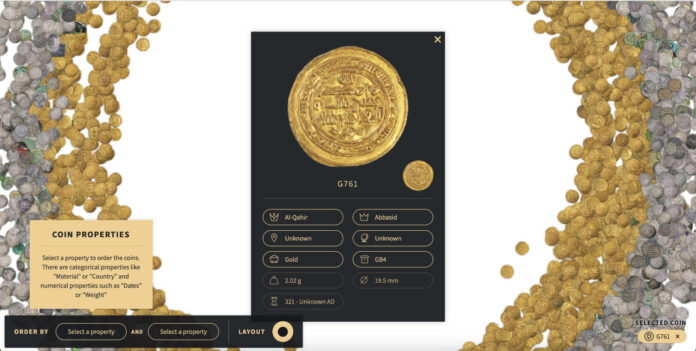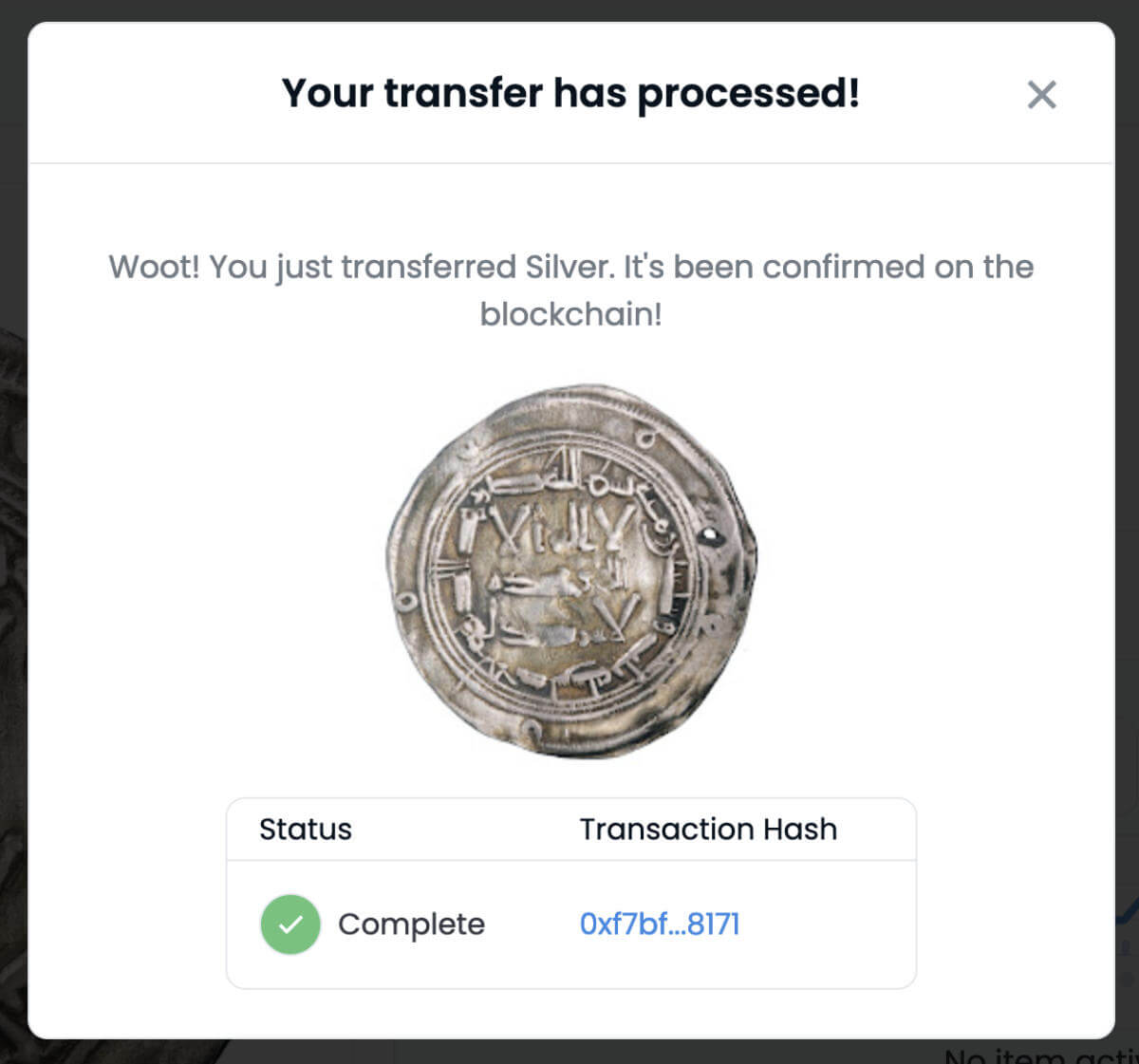
Since 2013, the German company Collecto has been developing solutions for the digitization and management of museum and private collections. Their services range from photographic capture to collection management, data storage and visualization. Machine learning makes it possible to capture huge amounts of data in a short period of time and create connections between various data sets. In an interview, Johannes von Mallinckrodt, the founder of Collecto, explains how his company aims to make the work of collectors and curators easier, why the collector always remains the sole owner of the data, and how Collecto is expanding its portfolio specifically for collectors.
CoinsWeekly: Collecto has developed a software platform for digitizing works of art. Is there also a hardware component? What exactly does your service include?
von Mallinckrodt: Before we think about services, we want to understand the people behind the collection. Every collection is unique and there are very different motives for someone to want to digitize their collection. Once we know what the collector wants, we can make recommendations that are tailored to their needs. We have spent years perfecting our methods for data capture. We have also developed our own platform based on the needs of international collectors. For large projects, we can also design customized production processes and program the corresponding control systems.

CoinsWeekly: Can you characterize in a few words your company’s main services of Digitization, Asset Management and Art Experiences?
von Mallinckrodt: Digitization refers to the process of making valuable collection objects digitally available. This means that we see wonderful things every day: from small items such as coins and pearls to watches and large-scale oil paintings or vintage cars. We are currently working on a 3D model of a historic airplane.
Asset Management includes the CMS (Collection Management System) and DAM (Digital Asset Management). In short, this combines collection management with unlimited storage possibilities of documents and multimedia data such as high-resolution image, audio and video files as well as 3D objects for augmented reality applications.
Art Experiences refers to digital collection experiences and visualization. The best way to understand what this can look like is to browse through the websites of some of the museums we have worked with: Pinakothek der Moderne App, Sammlung Digital: Franz Marc Museum, Museum of Islamic Art, Kunstmuseum Basel.
CoinsWeekly: On your website, you mention Tokenization. Does this mean that you assign a unique identifier to each object using blockchain technology, so that this object can be recognized at any time?
von Mallinckrodt: Exactly. The so-called digital twin of the original object will directly be transferred to your crypto wallet on your smartphone. Another advantage is that you can securely link information and documents to the object. That is quick and easy.

CoinsWeekly: Can this also be applied to coins?
von Mallinckrodt: Of course. I can show you the NFT of a coin on my smartphone.
CoinsWeekly: On your website, you highlight that your strong point is the connection of all kind of data. In other words: is it true that you can assign NFTs, customs and acquisition documents to a specific object and, at the same time, link it to content that is of interest to museum visitors?
von Mallinckrodt: Yes, that is correct. Basically, we have to distinguish between the two parts of our platform: On the one hand, secure internal management and, on the other hand, public access. Certain data such as customs documents may only be processed by specific persons of the institution that owns the collection. Such data will not be made public. We can precisely define access rights via our platform. The same applies to public access rights. Museum visitors are less interested in customs documents than in a video interview with the artist. Private collections often do not provide any kind of public access.
CoinsWeekly: Can you give us a few examples to illustrate what is possible with the help of your software for museum visitors and curators?
von Mallinckrodt: We make the lives of museum curators easier. And create new experiences for visitors. We provide private collectors and museums with a comprehensive and yet user-friendly asset management system. The special feature: we combine the CMS (Collection Management System) with DAM (Digital Asset Management). This means that all the data and the entire work flow are combined in a single system. And there is no limit to its scalability. We even go one step further: collections can be linked via our platform and exchange selected data in a completely secure setting.
Our system enables museums to create collections and store all the corresponding documents and media files. If you visit the Art Museum in Basel or the Pinakothek der Moderne in Munich, you can use our apps to put together tours and play audio and video files. Numismatic collections can be linked in the same way. Imagine you see a coin in a museum that only exists three times in the world. We can make the other two specimens available to you digitally, and you can listen to an audio guide that explains the differences.

CoinsWeekly: Your Head of Digital Collections Benedikt Müller worked in the auction business for several years. So, he is familiar with the collecting world. Have you already considered whether a standardized version of your software could be launched for collectors and dealers? Especially the market for coins and paper money or the market for prints, stamps, cartoons, sports cards and bibliophile books would be suitable.
von Mallinckrodt: There is already a standardized version of our software available that we sell specifically to large private collections under the COLLECTO brand. In 2024, COLLECTO will be launched as a SaaS (software as a service). With this platform, we aim to reach and inspire collectors across the board.
CoinsWeekly: Especially in Europe, people are very aware of data protection. Where do you store customer data?
von Mallinckrodt: Our data is stored in a state-of-the-art data center in Germany. We do not only meet the highest security standards, but of course also comply with all data protection requirements. Moreover, our customers can export and delete their data from our system at any time. It is particularly important to us that our customers know that they own the data and that they can do whatever they want with it.
CoinsWeekly: The second legal aspect German numismatists will quickly think of is whether the German Cultural Property Protection Act (KGSG) has an impact on your projects.
von Mallinckrodt: When the law was first discussed in detail a few years ago, we immediately asked ourselves what we could do for our customers. COLLECTO complies with the German Cultural Property Protection Act and enables our customers to fulfill their due diligence obligations. They always have an overview and can save all relevant documents, export them and compile a professional report on an object or the entire collection.
CoinsWeekly: Numismatic collections differ from other art collections in that – although they contain particularly small objects – they usually include a vast quantity of them. Numbers of collections in museums can be in the four-, five- or even six-digit range. Against this background, have you already dealt with the topic of artificial intelligence?
von Mallinckrodt: We started our first machine learning (ML) project about two years ago. Especially for numismatics, this holds great promise. We can recognize patterns in huge data sets and establish links within no time at all. We are currently looking for a collection that would like to work with us on a highly innovative public project: we will create a fascinating visualization based on artificial intelligence. The funding has already been confirmed. Thanks to government support, we can subsidize a total volume of at least 300,000 euros with 100,000 euros. In our last project, the institution was supported by a foundation, so that the institution only had to pay about 40,000 euros by itself. So, all we need for this project is a strong partner with fascinating data.
CoinsWeekly: Thank you very much for the interview, Mr. von Mallinckrodt.
Here you can visit the website of Collecto.



